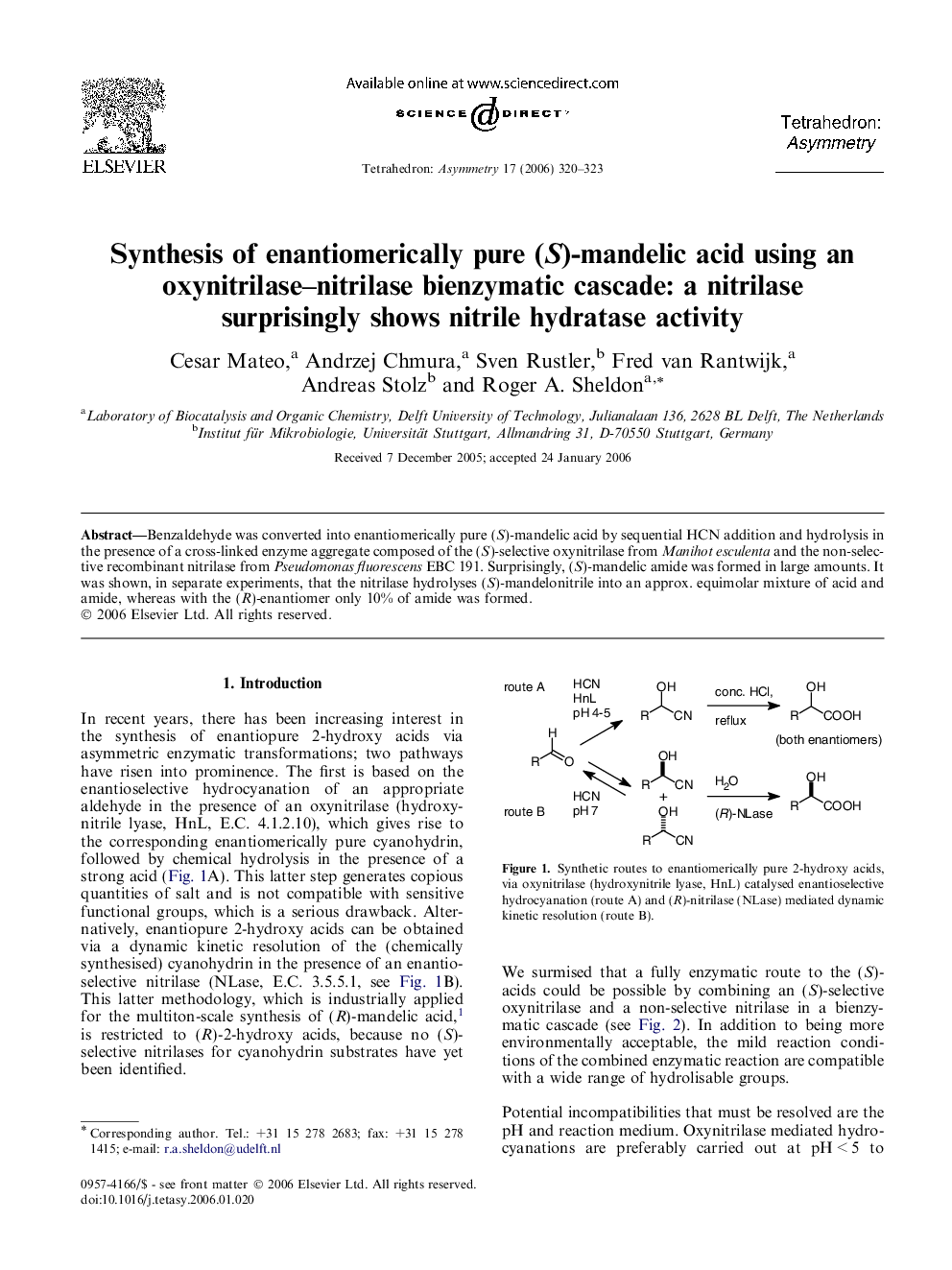| Article ID | Journal | Published Year | Pages | File Type |
|---|---|---|---|---|
| 1348597 | Tetrahedron: Asymmetry | 2006 | 4 Pages |
Abstract
Benzaldehyde was converted into enantiomerically pure (S)-mandelic acid by sequential HCN addition and hydrolysis in the presence of a cross-linked enzyme aggregate composed of the (S)-selective oxynitrilase from Manihot esculenta and the non-selective recombinant nitrilase from Pseudomonas fluorescens EBC 191. Surprisingly, (S)-mandelic amide was formed in large amounts. It was shown, in separate experiments, that the nitrilase hydrolyses (S)-mandelonitrile into an approx. equimolar mixture of acid and amide, whereas with the (R)-enantiomer only 10% of amide was formed.
Graphical abstractFigure optionsDownload full-size imageDownload as PowerPoint slide
Related Topics
Physical Sciences and Engineering
Chemistry
Inorganic Chemistry
Authors
Cesar Mateo, Andrzej Chmura, Sven Rustler, Fred van Rantwijk, Andreas Stolz, Roger A. Sheldon,
